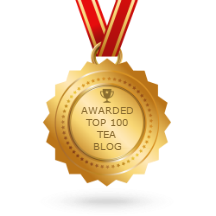Tea and math are not usually two items that go together in the same sentence. In fact, knowing how averse to math some folks are, I almost titled this article something like “tea by the numbers” or “counting on tea.” However, that would have driven away those averse to incredibly bad punnery. Sigh!
Believe it or not, math has quite a relationship with tea. “Oh, yeah?” you ask. “Oh, yeah,” I say.

Recently, math played a big part in an article I wrote (Some Pros and Cons of Tea Concentrates) and thus sparked this article. I was engaged in trying to convert the recipe I had found online into something more straightforward to compare with a more normal preparation of a particular tea.
The original recipe amounts (enough to make 40-50 cups of regular strength tea):
1-1/2 quarts of water
1/4 pound of tea
Thinking that folks might not be able to compare in a ready manner the amounts for regular strength tea to tea concentrates, I had to reduce the amounts and came up with this from the above for the concentrate version:
6 ounces of water
3 teaspoons (1/2 ounce) tea
The process involved a bit of math, but nothing too challenging. Quarts got converted to ounces — there are 32 ounces in a quart and therefore 48 ounces in 1-1/2 quarts. Then, pounds had to be expressed as ounces — 16 ounces per pound. Now comes the tricky part: 6 ounces of water is one-eighth of 1-1/2 quarts, so the number of ounces of tea had to be divided by 8, making it 1/2 ounce, which is also 3 teaspoons. Phew!
Other math instances where tea is concerned:
- Using a certain number of teaspoons of tea per a certain amount of water. For example, I use six teaspoons of tea leaves to make six 8-ounce cups of tea.
- Timing the whole process of making the tea, from how long it takes the water to heat to the proper temperature and making sure you have everything ready when the water is, to making sure the tea does not over or under steep.
- Calculating how much stronger you need to steep your tea if you are planning to pour it over ice cubes to chill it quickly. The cubes will melt and dilute the tea. Quick: how many ounces of water is there in the average ice cube? (see below for answer)
Another tea and math connection: Sudoku puzzles. They are quite the rage and can help pass the time whilst the kettle is on the stove (or turned on, if you’re using one of the — ugh! — unromantic electric kind). Hone your math skills and wait for that whistle to sound, indicating it’s time to get that tea a-steeping!
Number of ounces of water in the average ice cube (according to several sources online):
1
Now, calculate the number of average ice cubes you will need in your pitcher or glass of tea and that is how much water gets added to the tea (whether or not they melt fully). Twenty ice cubes melt to 20 ounces of water.
© Online Stores, Inc., and The English Tea Store Blog, 2009-2014. Unauthorized use and/or duplication of this material without express and written permission from this article’s author and/or the blog’s owner is strictly prohibited. Excerpts and links may be used, provided that full and clear credit is given to Online Stores, Inc., and The English Tea Store Blog with appropriate and specific direction to the original content.



Leave a comment